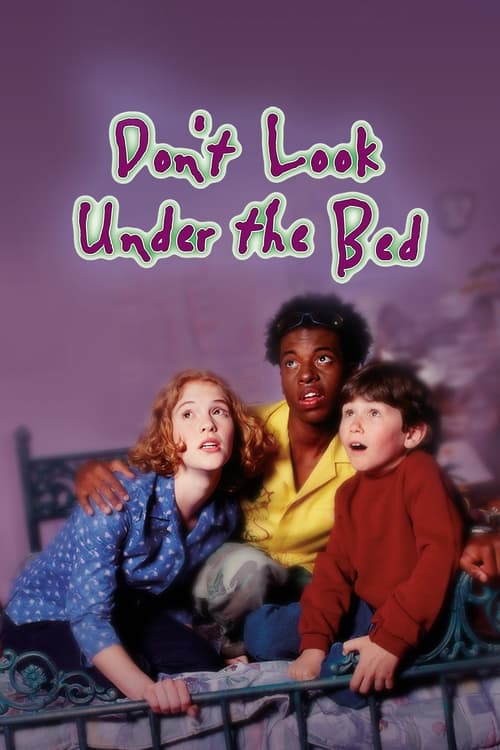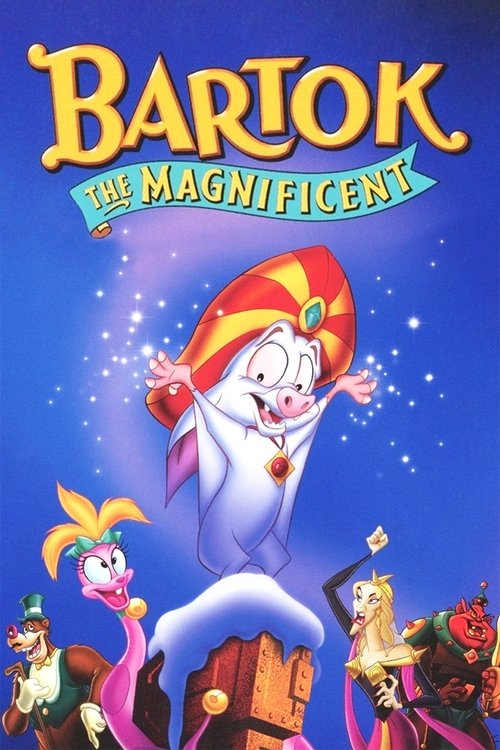
Ask Your Own Question
What is the plot?
In the quiet town of Middleburg, a place Frances Bacon McCausland describes as "middle of the country, peaceful and normal," strange things begin to unsettle the community. Though filmed in Salt Lake City, Utah, the town's calm is shattered by bizarre pranks: dogs mysteriously perched on rooftops, alarm clocks ringing hours too early, eggs splattered across a teacher's car, gelatin filling the school swimming pool, and the letter "B" spray-painted all over town--on walls, signs, and school lockers, except for Frances' own locker, which bears a "B" only on the inside. The townsfolk quickly suspect Frances, a highly logical and intelligent teenager who has just started high school a year early, of orchestrating these pranks, but she is baffled and denies any involvement.
Frances Bacon McCausland is no ordinary teenager. At seventeen, she prides herself on her rational mind and factual approach to life, traits sharpened by the trauma of her younger brother Darwin's near-fatal battle with leukemia. Her parents, well-meaning but increasingly distrustful, begin to question her as the pranks escalate. Frances' best friend Joanne drifts away, unable to stand by Frances as suspicion mounts. The social isolation deepens Frances' frustration and confusion.
One day, an older boy named Larry Houdini appears to Frances. Larry is not just any boy; he is her brother Darwin's imaginary friend, visible only to children and those who still possess a vivid imagination. Larry reveals a startling truth: Frances is being framed by the Boogeyman, a supernatural trickster who thrives on fear and chaos. Larry's presence is at first hard for Frances to accept--her worldview is grounded in logic, and the idea of imaginary friends and Boogeymen seems childish and absurd. Yet Larry's knowledge and earnestness convince her to listen.
Larry explains that the Boogeyman is responsible for the pranks terrorizing Middleburg and that Frances is the Boogeyman's target. He tells her that the Boogeyman is an imaginary friend who was abandoned too soon and has transformed into a vengeful creature. Frances learns that when children stop believing in their imaginary friends prematurely, those friends can become Boogeymen, harboring resentment and seeking revenge. This revelation unsettles Frances deeply, especially when Larry hints that he himself is beginning to show signs of this transformation.
The tension in Middleburg escalates. The Boogeyman causes a blackout that plunges the town into darkness, but notably, the McCausland home's Christmas lights remain glowing, a beacon of safety amid the chaos. Frances' family grows increasingly concerned, and her parents' trust in her erodes. Frances tries desperately to prove Larry's existence and her innocence, but her efforts only make her appear more unstable. At school, the letter "B" continues to appear, and the pranks grow more disruptive.
Frances turns to research, consulting an old book about imaginary friends and Boogeymen. She discovers that the Boogeyman is not just a myth but a real entity born from lost belief and fear. She also learns about a device called the tetrafuse, a mysterious contraption that can rapidly age Boogeymen, rendering them harmless. Larry explains that the tetrafuse is simple enough for children to understand but incomprehensible to adults, underscoring the divide between childhood imagination and adult skepticism.
The emotional core of the story centers on Frances' relationship with her brother Darwin. Darwin still believes in Larry, but as Frances struggles with her own doubts and the mounting pressure, she inadvertently convinces Darwin to stop believing in Larry, fearing that it is time to grow up and leave childish things behind. This act causes Larry to begin his transformation into a Boogeyman, alarming Frances and raising the stakes.
The climax arrives when Darwin, while in Frances' bedroom, accidentally steps into a strange substance called Boogey Goo--an eerie, glowing slime that Larry uses as bait to lure the Boogeyman. The moment Darwin touches the goo, the Boogeyman appears and kidnaps him, dragging him into a dark, shadowy dimension beneath Frances' bed. This realm is a twisted, nightmarish version of reality, filled with shadows and eerie silence, where the Boogeyman reigns.
Frances, determined to save her brother, enters this otherworldly dimension with Larry's help. The atmosphere is thick with tension and fear as they navigate the Boogeyman's lair, a place where nightmares take shape and the rules of the real world no longer apply. Frances confronts the Boogeyman in a final, intense showdown.
In a pivotal revelation, Frances discovers that the Boogeyman is none other than Zoe, her old imaginary friend whom she abandoned when Darwin fell ill. Zoe's transformation into the Boogeyman is fueled by feelings of abandonment and betrayal. Frances faces Zoe with a mixture of fear, guilt, and compassion. Instead of using the tetrafuse to destroy Zoe outright, Frances chooses a different path. She reaches out, holding Zoe's hand and expressing genuine care and regret, telling her that she still values and remembers her.
This act of kindness and belief breaks the curse. Zoe's monstrous form melts away, and she reverts to her original imaginary friend self, innocent and lost. Larry and Zoe, now restored, decide to leave Middleburg together to help other forgotten imaginary friends in nearby towns, continuing their mission to protect childhood imagination.
The film closes with Frances reflecting on the experience. She understands that imagination is not something to be discarded in the rush to grow up but a vital part of life that must be nurtured. The pranks stop, peace returns to Middleburg, and Frances' relationships with her family and friends begin to heal. The Christmas lights in the McCausland home shine brightly, symbolizing hope and the enduring power of belief.
Throughout the story, there are no deaths--only the emotional turmoil of loss and rediscovery. The pranks, while disruptive and frightening, are ultimately harmless. The film's tension builds steadily, moving from mysterious mischief to supernatural confrontation, culminating in a heartfelt resolution that emphasizes empathy and imagination over fear and isolation.
"Don't Look Under the Bed" ends on a hopeful note, with Frances embracing the magic of childhood and the importance of believing in the unseen, a lesson that resonates beyond the boundaries of Middleburg and into the hearts of viewers.
More Movies Like This
Browse All Movies →
What is the ending?
In the ending of "Don't Look Under the Bed," Frances discovers that the imaginary friend, Larry, is actually a Boogeyman trying to protect her from the real threat of the Boogeyman. Frances and Larry confront the Boogeyman, and with Frances's courage and belief in herself, they manage to defeat him. Frances learns to embrace her imagination and helps Larry return to his own world, freeing her from the fear that has plagued her. The film concludes with Frances feeling empowered and accepting her childhood, while her family begins to understand her experiences.
Now, let's delve into the ending in a more detailed narrative fashion:
As the climax of the story unfolds, Frances, portrayed as a brave yet troubled teenager, stands in the dimly lit attic of her home, the air thick with tension. She has just learned that her imaginary friend, Larry, is not the enemy she initially thought he was. Instead, he reveals that he is a guardian figure, trying to protect her from the true menace lurking in the shadows--the Boogeyman. The atmosphere is charged with fear and uncertainty, but Frances's determination shines through.
In a pivotal moment, Frances confronts her fears head-on. She realizes that the Boogeyman feeds off the fear of children, growing stronger with each frightened thought. With Larry by her side, she gathers her courage, her heart racing as she prepares to face the creature that has haunted her dreams. The scene is visually striking, with dark corners of the attic casting ominous shadows, and the flickering light from a nearby window illuminating Frances's resolute expression.
As they descend into the depths of the Boogeyman's lair, Frances and Larry encounter the creature, a grotesque figure that embodies the fears of childhood. The Boogeyman taunts Frances, trying to instill doubt and fear within her. However, Frances, fueled by her belief in herself and her friendship with Larry, stands firm. She recalls the moments of joy and imagination that defined her childhood, which gives her the strength to confront the darkness.
In a climactic showdown, Frances uses her imagination as a weapon against the Boogeyman. She visualizes her fears transforming into light, pushing back against the creature's malevolence. The battle is intense, with swirling shadows and bursts of light as Frances and Larry work together to weaken the Boogeyman. The emotional stakes are high, as Frances fights not just for herself but for all children who have ever felt afraid.
Finally, in a moment of triumph, Frances manages to banish the Boogeyman, who shrieks in defeat as he fades into nothingness. The attic, once a place of fear, is now filled with a warm glow, symbolizing Frances's victory over her fears. Larry, having fulfilled his purpose, prepares to return to his own world. There is a bittersweet moment as Frances realizes she must let go of her imaginary friend, but she understands that this is a necessary step in her growth.
As Larry departs, he reassures Frances that she will always have the strength within her to face her fears. Frances watches him disappear, a mix of sadness and empowerment washing over her. She has learned to embrace her imagination and the power it holds, transforming her fear into courage.
The film concludes with Frances rejoining her family, who have begun to understand her experiences. They embrace her, and the warmth of their love envelops her, signifying a newfound acceptance. Frances smiles, a sense of peace settling over her as she realizes that she is no longer bound by her fears. The final scene captures her standing confidently, ready to face the world, embodying the film's message about the importance of confronting one's fears and the power of imagination.
In the end, Frances emerges as a stronger individual, having faced the Boogeyman and triumphed. Larry, the imaginary friend, returns to his realm, having fulfilled his role as a protector. The Boogeyman, defeated, no longer poses a threat, symbolizing the victory of courage over fear. Frances's family, now more understanding, represents the support system that will help her continue to grow. The film closes on a hopeful note, emphasizing the journey from fear to empowerment.
Is there a post-credit scene?
The movie "Don't Look Under the Bed," produced in 1999, does not have a post-credit scene. The film concludes with a resolution to the main conflict, focusing on the protagonist, Frances, overcoming her fears and the challenges posed by the Boogeyman. After the climax, the story wraps up with a sense of closure, and there are no additional scenes or content after the credits roll. The ending emphasizes Frances's growth and the importance of facing one's fears, leaving the audience with a feeling of completion rather than a teaser for further events.
Who is Frances and what is her role in the story?
Frances is the main protagonist of 'Don't Look Under the Bed.' She is a high school student who is intelligent, resourceful, and somewhat skeptical. As the story unfolds, she becomes the target of a mysterious creature that emerges from under her bed, leading her to confront her fears and the reality of the boogeyman.
What is the significance of the boogeyman in the film?
The boogeyman in 'Don't Look Under the Bed' is a creature that feeds on the fears of children. It is revealed that the boogeyman is actually a misunderstood figure who was once a child himself, named Larry, who was transformed due to the fear he accumulated. This character serves as both an antagonist and a tragic figure, highlighting themes of fear and acceptance.
How does Frances first encounter the boogeyman?
Frances first encounters the boogeyman when she discovers strange occurrences in her home, such as her belongings being moved and her brother's toys being scattered. The tension escalates when she finds herself face-to-face with the boogeyman under her bed, leading to a terrifying confrontation that sets the stage for her quest to understand and ultimately confront her fears.
What role does Frances's brother, Charlie, play in the story?
Frances's younger brother, Charlie, plays a crucial role in the story as he becomes one of the boogeyman's targets. His innocence and fear amplify Frances's determination to protect him. Throughout the film, Charlie's belief in the boogeyman contrasts with Frances's initial skepticism, and his character helps to illustrate the impact of fear on children.
How does Frances's perception of fear change throughout the film?
Frances's perception of fear evolves significantly throughout 'Don't Look Under the Bed.' Initially, she dismisses the idea of the boogeyman as childish nonsense. However, as she confronts the reality of the creature and her own fears, she learns to embrace her emotions and ultimately faces the boogeyman, transforming her understanding of fear from something to be avoided to something that can be confronted and understood.
Is this family friendly?
"Don't Look Under the Bed" is a Disney Channel Original Movie that, while aimed at a family audience, contains some elements that may be unsettling for younger viewers or sensitive individuals. Here are some potentially objectionable or upsetting aspects:
-
Monstrous Imagery: The film features a character known as the Boogeyman, who is depicted as a frightening creature. His appearance and actions may be scary for children.
-
Themes of Fear and Anxiety: The story revolves around the protagonist, Frances, confronting her fears and the unknown, which may resonate with children who have their own anxieties.
-
Nightmare Sequences: There are scenes that depict nightmares and dark, surreal imagery that could be disturbing for younger audiences.
-
Isolation and Loneliness: Frances experiences feelings of isolation and being misunderstood by her peers and family, which could evoke emotional responses in sensitive viewers.
-
Conflict and Tension: The film includes moments of conflict, both between characters and with the Boogeyman, which may create a sense of tension that could be upsetting.
-
Supernatural Elements: The concept of a Boogeyman and the idea of monsters lurking under the bed may provoke fear in children who are already apprehensive about such themes.
While the film ultimately conveys messages about bravery and facing one's fears, these elements may require parental guidance for younger viewers.
































